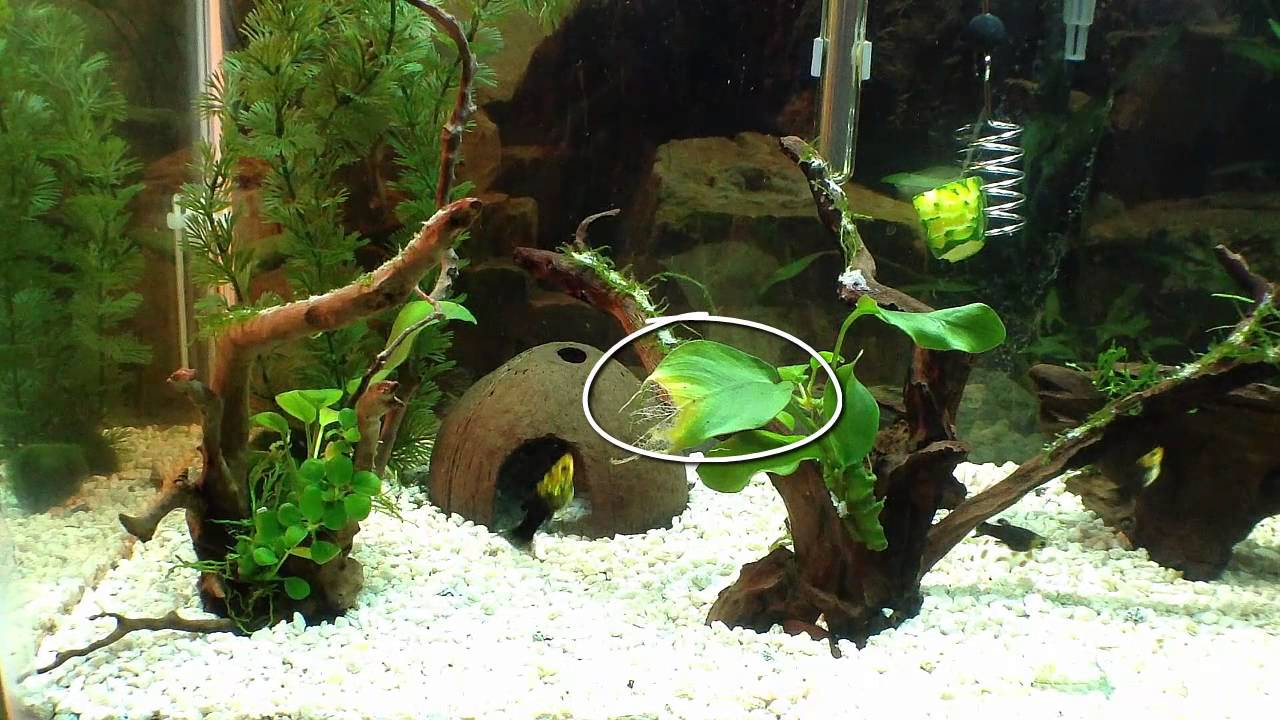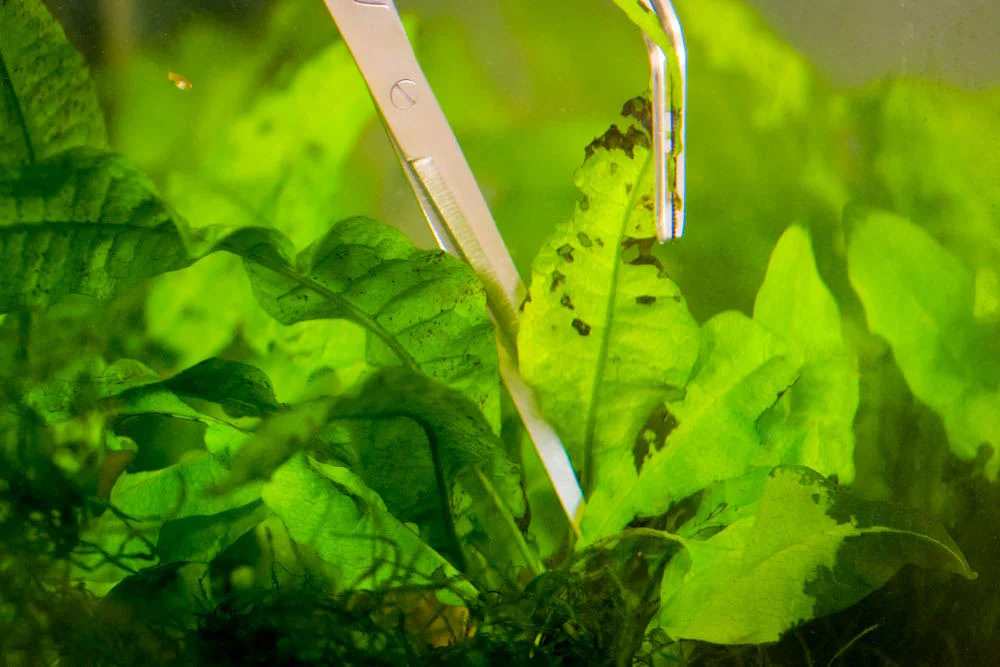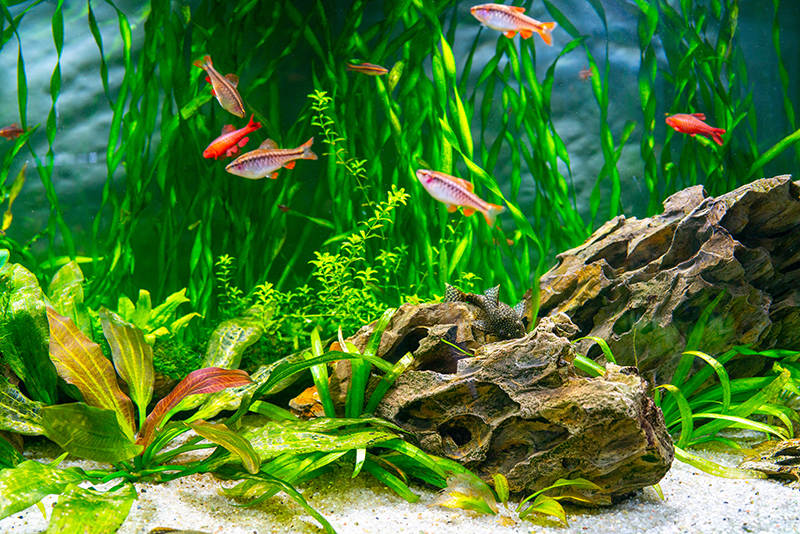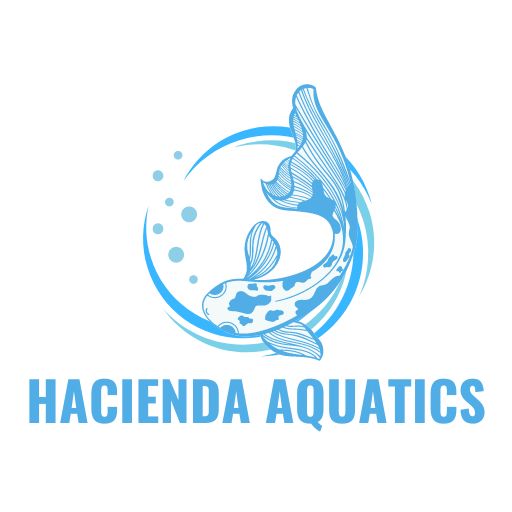Aquatic Knowledge
When should I dose potassium in my planted aquarium?
Having a thriving planted aquarium is a rewarding hobby, but it can also be quite a balancing act. One of the key nutrients your aquatic plants need is potassium. But how do you know when to add it, and how much is enough? Let’s dive into this essential topic and explore everything you need to know about when should I dose potassium in my planted aquarium.
Understanding Potassium in Aquatic Plants

Potassium is a vital macronutrient that plays a significant role in various physiological processes in aquatic plants, including photosynthesis, enzyme activation, and osmoregulation. It helps plants absorb and retain water, synthesize proteins, and resist disease and stress.
Role of Potassium in Plant Growth: Potassium facilitates the movement of water, nutrients, and carbohydrates within plant tissues. It enhances the overall vigor and resilience of plants, helping them withstand environmental stresses such as temperature fluctuations and pests. This macronutrient is crucial for the activation of enzymes that are involved in photosynthesis and energy transfer. Moreover, potassium helps in maintaining the osmotic balance in plant cells, ensuring they stay turgid and capable of efficient nutrient uptake.
Symptoms of Potassium Deficiency: Potassium deficiency can be detrimental to plant health. Common symptoms include:
- Yellowing of Older Leaves: The lack of potassium often leads to chlorosis, where older leaves turn yellow while the veins remain green.
- Pinholes in Leaves: Small holes may appear in the leaves, a classic sign of potassium deficiency.
- Stunted Growth: Affected plants may exhibit slower growth rates and smaller leaf size.
- Leaf Edge Necrosis: The edges of leaves may turn brown and die, indicating severe potassium deficiency.
Signs Your Aquarium Needs Potassium
Yellowing Leaves
One of the first signs that your aquarium might need a potassium boost is yellowing leaves, especially on older parts of the plant. This yellowing usually starts at the leaf edges and gradually spreads inward, indicating that the plant is struggling to get enough nutrients.
Slow Plant Growth
If you’ve noticed that your plants are growing more slowly than usual or seem stunted, this could be a clue that they are lacking potassium. When plants don’t get enough of this crucial nutrient, their growth tends to slow down because they can’t properly photosynthesize.
Pinholes in Leaves
A tell-tale sign of potassium deficiency is small pinholes developing in the leaves. These holes often start small but can expand over time, making the plant look patchy and unhealthy. If you see this, it’s time to consider dosing potassium.
When to Dose Potassium
Determining the right time to dose potassium can be tricky, but there are specific scenarios when dosing is essential:
Initial Setup of a Planted Aquarium: When setting up a new planted tank, start with a balanced nutrient regimen, including potassium. This helps establish a strong foundation for plant growth. Ensuring adequate potassium from the beginning supports root development and overall plant health.
After Water Changes: Water changes can dilute the nutrient levels in your tank. Dosing potassium after a water change ensures that plants continue to receive the necessary nutrients. This practice maintains a consistent nutrient level, preventing deficiencies.
During Periods of Active Plant Growth: Plants have varying growth rates, and during periods of active growth, they consume more nutrients. Monitor your plants and increase potassium dosing when you notice accelerated growth. Fast-growing plants like stem plants or carpeting plants typically require more potassium.
When Deficiency Symptoms Appear: If you observe signs of potassium deficiency, it’s a clear indication that you need to dose potassium. Immediate action can prevent further deterioration of plant health. Regularly check your plants for the symptoms mentioned earlier and respond promptly.
Testing Potassium Levels
Importance of Testing: Regularly testing potassium levels is crucial to maintaining a balanced nutrient environment in your aquarium. Without testing, you risk underdosing or overdosing, both of which can harm your plants. Accurate testing allows for precise nutrient management.
Recommended Testing Kits: Invest in reliable testing kits designed specifically for potassium. Brands like API, Seachem, and JBL offer accurate and easy-to-use test kits. These kits provide clear instructions and reliable results, helping you maintain optimal potassium levels.
Frequency of Testing: Test potassium levels weekly or bi-weekly, especially if you’re adjusting your dosing regimen. Frequent testing helps you keep track of nutrient levels and make necessary adjustments. This practice ensures that your plants always have access to adequate potassium.
Types of Potassium Supplements
Liquid Potassium Fertilizers: These are easy to dose and quickly absorbed by plants. Brands like Seachem Flourish Potassium provide a convenient liquid option. Liquid fertilizers are ideal for consistent and even distribution of potassium throughout the water column.
Dry Potassium Salts: Potassium nitrate (KNO3) and potassium sulfate (K2SO4) are common dry salts used for dosing. They are cost-effective and allow for precise dosing. Dry salts can be dissolved in water to create a custom dosing solution tailored to your aquarium’s needs.
Potassium-Rich Substrates: Some substrates are enriched with potassium and other nutrients, providing a steady supply to plant roots. These substrates gradually release potassium, ensuring a consistent nutrient supply directly to the root zone. Examples include ADA Aqua Soil and Tropica Plant Substrate.
By understanding and managing potassium levels in your planted aquarium, you can create an environment where your aquatic plants thrive. Regular testing, proper dosing, and choosing the right supplements will ensure that your plants receive the potassium they need for optimal growth and health.
Dosing Strategies

Daily Dosing vs. Weekly Dosing: Daily dosing provides a consistent supply of nutrients and helps prevent fluctuations in nutrient levels. Weekly dosing, on the other hand, is simpler but may require larger doses to maintain adequate levels.
Recommended Dosages: Follow the instructions provided by the manufacturer of your potassium supplement. As a general guideline, aim for 10-20 ppm of potassium in your tank.
Adjusting Doses Based on Plant Response: Monitor your plants and adjust doses based on their response. If you notice deficiency symptoms, increase the dose slightly. If you see signs of excess, reduce the dose.
Compatibility with Other Nutrients
Balancing Potassium with Nitrogen and Phosphorus: Potassium works in conjunction with nitrogen and phosphorus to promote healthy plant growth. Ensure that your dosing regimen maintains a balance between these three macronutrients.
Interaction with Trace Elements: Potassium can interact with trace elements such as iron and magnesium. Monitor your trace element levels and adjust dosing to prevent nutrient lockout.
Avoiding Nutrient Lockout: Nutrient lockout occurs when an excess of one nutrient prevents plants from absorbing other essential nutrients. Regular testing and balanced dosing help avoid this issue.
Practical Tips for Dosing Potassium
Best Practices for Dosing
- Dose potassium in the morning when plants start their photosynthesis process.
- Use a dosing pump for precise and consistent dosing.
- Keep a log of your dosing schedule and plant responses.
Common Mistakes to Avoid

- Overdosing: More is not always better. Stick to recommended doses.
- Ignoring Testing: Regular testing is crucial for maintaining nutrient balance.
- Inconsistent Dosing: Stick to a consistent dosing schedule to ensure steady nutrient levels.
Monitoring and Adjusting Doses: Regularly observe your plants and test water parameters. Adjust doses based on plant health and nutrient levels to maintain optimal conditions.
FAQs on Potassium Dosing
How often should I dose potassium?
Dose potassium according to your plant’s needs and your testing results. Weekly or bi-weekly dosing is common, but some aquarists prefer daily dosing for consistency.
Can I overdose potassium in my aquarium?
Yes, overdosing potassium can lead to nutrient imbalances and algae growth. Stick to recommended doses and test regularly.
What’s the best time of day to dose potassium?
Dose potassium in the morning when plants begin photosynthesis. This ensures that nutrients are available during the active growth period.
How do I measure potassium levels accurately?
Use reliable test kits designed for aquarium use. Follow the manufacturer’s instructions for accurate results.
What are the signs of potassium deficiency?
Look for yellowing older leaves, pinholes in leaves, stunted growth, and leaf edge necrosis. If you notice these signs, increase your potassium dosing.
